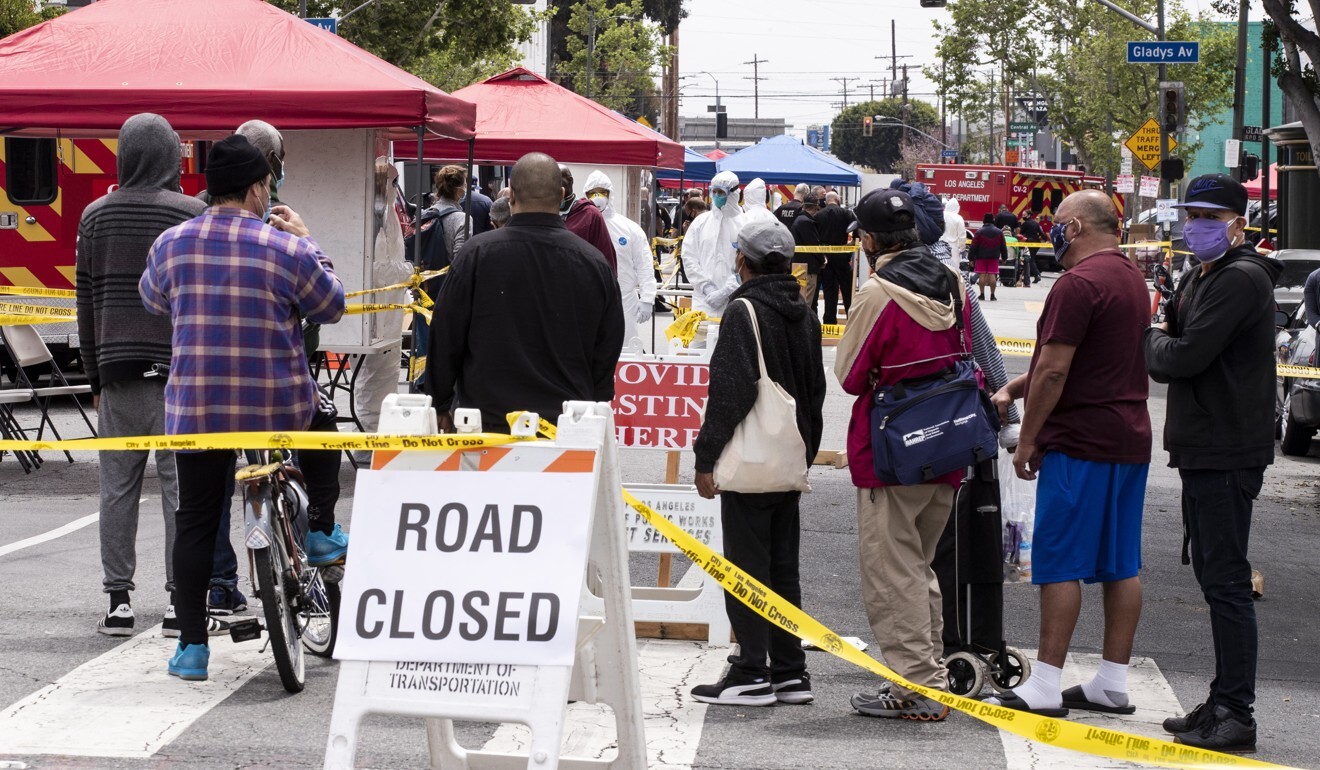Coronavirus: Los Angeles County alone may have hundreds of thousands of infections, US researchers find
- Report says 2.8 to 5.6 per cent of adult residents have Covid-19 antibodies, roughly translating to 221,000 to 442,000 cases of past exposure
- Number for exceeds 8,000 official cases reported at time of study

Hundreds of thousands of Los Angeles County residents may have been infected with the coronavirus by early April, far outpacing the number of officially confirmed cases, according to a report released on Monday.
The initial results from the first large-scale study tracking the spread of the coronavirus in the county found that 2.8 per cent to 5.6 per cent of adults have antibodies to the virus in their blood, an indication of past exposure.
That translates to roughly 221,000 to 442,000 adults who have recovered from an infection, according to the researchers conducting the study, even though the county had reported fewer than 8,000 cases at that time.
“We haven’t known the true extent of Covid-19 infections in our community because we have only tested people with symptoms, and the availability of tests has been limited,” study leader Neeraj Sood, a professor at the University of Southern California’s Price School for Public Policy, said in a statement.
“The estimates also suggest that we might have to recalibrate disease prediction models and rethink public health strategies.”
The early results from LA County come three days after Stanford researchers reported that the coronavirus appears to have circulated much more widely in Santa Clara County than previously thought.
The Stanford team estimated that 2.5 per cent to 4.2 per cent of Santa Clara County residents had antibodies to the coronavirus in their blood by early April.
Though the county had reported roughly 1,000 cases in early April, the Stanford researchers estimate the actual number was 48,000 to 81,000, or 50 to 85 times greater.
The Santa Clara study recruited around 3,300 participants from social media, which has raised some concerns that the results may not be representative of the county as a whole. The researchers made adjustments to their data to account for that problem.
The study was composed differently in Los Angeles; participants were selected through a market research firm to represent the make-up of the county. The county and USC researchers intend to repeat the study every two to three weeks for several months, to track the trajectory of the virus’s spread.
Both counties used rapid antibody tests supplied from Premier Biotech, a Minneapolis-based company. The test has not yet been approved by the FDA, although the federal government does allow for such tests to be used for public health surveillance.
As antibody testing, also known as serological tests, has risen in prominence, so too have concerns about accuracy over the results.
The LA County Public Health Department cautioned health care providers last week against interpreting results from such tests “until there is additional data on their best use because of concerns of both false negative and false positive results”.

Nevertheless, antibody tests have increasingly become a focal point in the response to coronavirus because they can potentially show the true extent of the virus’s reach and therefore can shed light on how close the population is to achieving herd immunity, in which enough people have some degree of immunity to the virus that it becomes difficult for infections to spread.
Such tests can also provide a more accurate picture of how lethal the virus is. Right now, the mortality rate is based on the number of confirmed infections, but the higher the number of infections, the lower the fatality rate.
“Though the results indicate a lower risk of death among those with infection than was previously thought, the number of Covid-related deaths each day continues to mount, highlighting the need for continued vigorous prevention and control efforts,” said Dr Paul Simon, chief science officer at the LA County Department of Public Health and co-lead on the study.